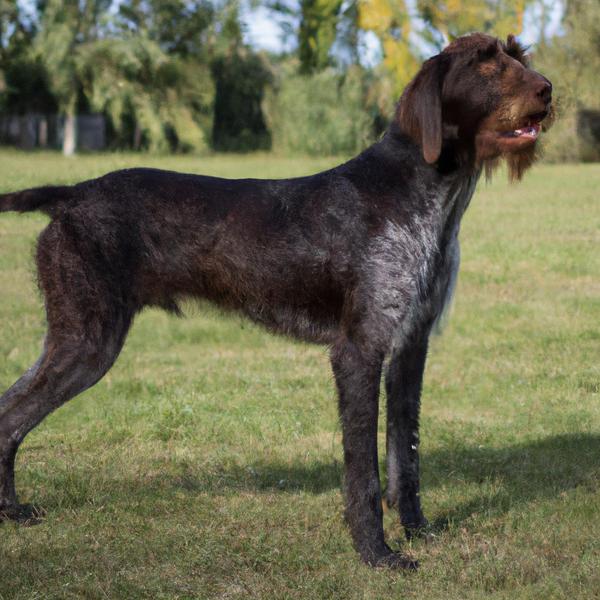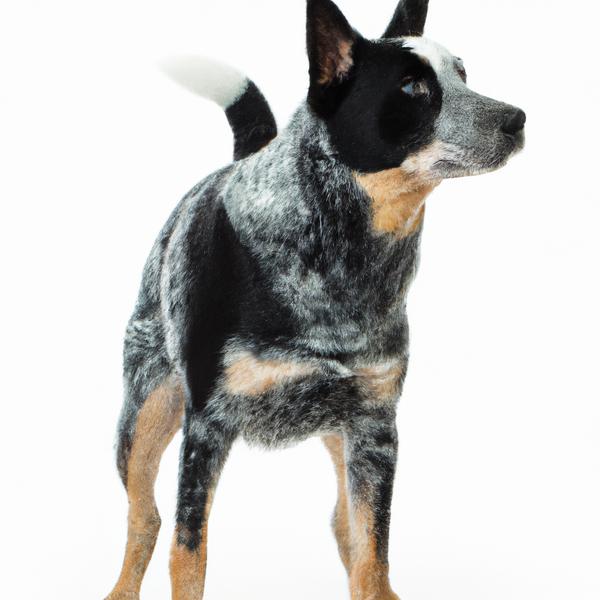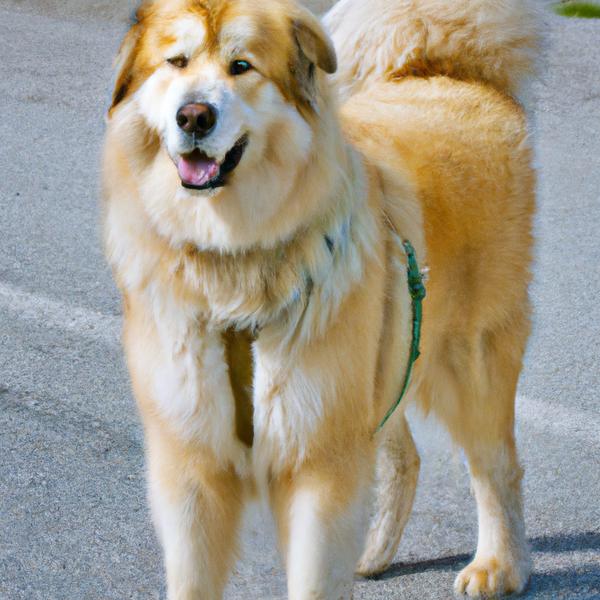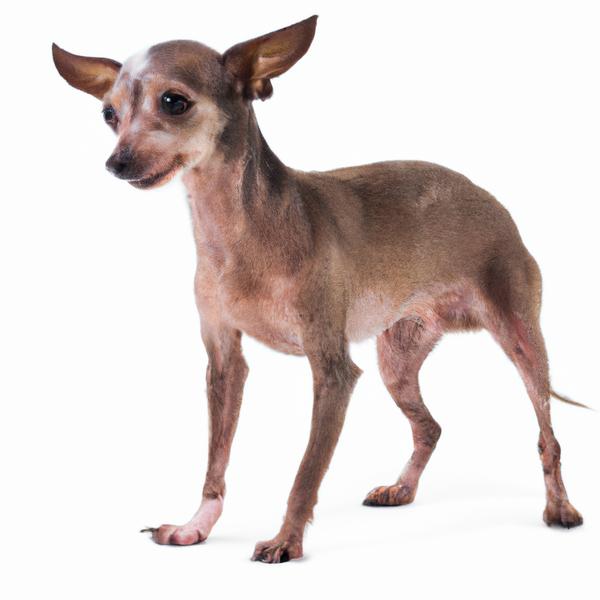Rat-A-Pap vs. Powderpap: Breed Differences and Similarities
Hypoallergenic
Are Rat-A-Paps or Powderpaps hypoallergenic, or neither?
Unfortunately, neither Rat-A-Pap nor Powderpap are hypoallergenic, which may not make them the best choice for dog lovers who suffer from pet allergies.
Temperament
What are the personalities of Rat-A-Pap and Powderpap dogs?
Loving
Happy
Energetic
Alert
Intelligent
Friendly
Affectionate
Lively
Inquisitive
Playful
Happy
Energetic
Alert
Intelligent
Friendly
Affectionate
Lively
Tempered
Sweet
Shedding Level
Do Rat-A-Paps shed more than Powderpaps, or which breed sheds more, Rat-A-Paps or Powderpaps?
Rat-A-Paps are moderate shedders, but regular brushing can reduce shedding and maintain coat health.
Powderpaps shed very little hair, making them a great choice for those who dislike excess hair in the house.
Watchdog Ability
Which dog breed makes a better watchdog, the Rat-A-Pap or Powderpap?
Rat-A-Paps are decent watchdogs - they'll alert their owner if something seems amiss.
Powderpaps aren't great guard dogs; they tend to just watch without taking action.
Origin
What is the origin of Rat-A-Pap and Powderpap dog breeds?
United States
United States
Ancestry
What are the origins of Rat-A-Pap and Powderpap breeds?
Papillon, American Rat Terrier
Papillon and Chinese Crested
Breed recognition
Which kennel clubs recognize/register Rat-A-Pap and Powderpap?
ACHC = American Canine Hybrid Club
DDKC = Designer Dogs Kennel Club
IDCR = International Designer Canine Registry®
DRA = Dog Registry of America, Inc.
Date of Birth
When were Rat-A-Pap and Powderpap breeds first developed?
Unknown
2000's
Eye Color Possibilites
What are the eye colors of Rat-A-Pap and Powderpap dogs?
Brown
Brown
Nose Color Possibilites
What are the natural nose colors of Rat-A-Pap and Powderpap?
Black
Black
Coat Color Possibilites
What are the natural colors of the coat for Rat-A-Pap and Powderpap breeds?
White
Black
Brown
Red
Fawn
Black
Gray
Brown
Cream
Silver
White
Coat Length
What is the typical coat length for Rat-A-Pap and Powderpap breeds?
Rat-A-Paps have medium-length coats.
Powderpaps are known for their coat length.
Coat Density
What is the density of the coat of Rat-A-Pap and Powderpap?
Coat Texture
What is the hair texture of Rat-A-Pap and Powderpap?
Straight
Litter Size
What is the usual litter size for Rat-A-Pap and Powderpap?
A Rat-A-Pap can have a litter of 5-7 puppies on average. However, it's worth noting that the size of the litters can vary greatly. Factors that can influence litter size include the health of the mother, breeding history, and genetics.
A Powderpap can have a litter of 2-5 puppies on average. However, it's worth noting that the size of the litters can vary greatly. Factors that can influence litter size include the health of the mother, breeding history, and genetics.
Adaptability
Rat-A-Paps are highly adaptable and versatile, making them excellent companions for families and individuals of all lifestyles.
Powderpaps are known for their adaptability and can adjust well to different environments and lifestyle changes.
Health Issues
Between Rat-A-Pap and Powderpap, which breed is more prone to health problems?
Rat-A-Pap and Powderpap breeds are generally considered to be healthy. However, like all breeds, they are susceptible to certain health issues and it is important to keep an eye out for them and address them with your veterinarian as needed.
Major Concerns
What are the major health concerns for Rat-A-Pap and Powderpap breeds?
Hip Dysplasia
Patellar Luxation
Progressive Retinal Atrophy
Lens Luxation
Congenital Heart Disease
Minor Concerns
What minor health issues should be kept in mind when owning Rat-A-Pap and Powderpap?
Patellar Luxation
Cataracts
Glaucoma
Von Willebrand's Disease
Hypothyroidism
Dental Problems
Cataracts
Skin Allergies
Von Willebrand's Disease
Follicular Dysplasia
Mitral Valve Dysplasia
Occasional Tests
What occasional tests are recommended for Rat-A-Pap and Powderpap breeds?
Radiographs
Blood Analysis
Blood Sugar and Thyroid Tests
Complete Physical Examination
Dna For Pra
Full Physical Examination
Hearing and Ear Tests
DNA for VWD
Heart Testing
Energy
How do the energy levels of Rat-A-Paps and Powderpaps compare?
Rat-A-Pap and Powderpap breeds are known for their high energy levels, so if you're looking for a more low-key dog, these breeds may not be the best choice.
Social Needs
Rat-A-Pap vs Powderpap social needs comparison
Rat-A-Pap and Powderpap have very high social needs. These needs include regular mental and physical stimulation, a job or purpose, and companionship. They thrive in environments where they have a lot of interaction with humans and other dogs.
Exercise Needed
Rat-A-Pap vs Powderpap exercise need comparison.
Rat-A-Paps need moderate physical activity and are great for families and active individuals.
Powderpaps require significant physical activity and suit those with an active lifestyle.
Sleeping Need
Which of the two sleeps the most/least: Rat-A-Pap or Powderpap?
Rat-A-Paps sleep less than other breeds but still need adequate sleep for good health.
Powderpaps have moderate energy levels and typical sleep patterns of 12-14 hours per day.
Tendency to Bark
Do Rat-A-Paps or Powderpaps bark more/less frequently?
Rat-A-Paps bark moderately when necessary and may also bark due to certain triggers like fear, alarm, boredom, greeting, separation anxiety and compulsive barking.
Powderpap dogs are generally less vocal than other breeds and only bark when necessary, such as to alert their owner or communicate.
Mouthiness
Mouthiness Comparison: Rat-A-Pap vs Powderpap?
Roaming urge
Rat-A-Pap vs Labrador: Running away tendency?
Prey Drive
Rat-A-Pap or Powderpap - which breed has a higher level of prey drive?
Past times
What are some enjoyable activities and ways to keep Rat-A-Pap and Powderpap entertained?
Playing Ball, Swimming, Visiting Family, Snuggling, Car rides
Walk, Run, Tug-of-war, Chase, Fetch, Hide & Seek, Brushing, Car rides, Companionship
Activity Level
Which breed has higher energy, Rat-A-Paps or Powderpaps?
Rat-A-Paps are high-energy dogs. They need mental as well as physical exercise. These dogs require a lot of your involvement and without it they can, and will, become problematic dogs.
Powderpaps are medium-energy dogs and typically enjoy socializing and playing casual or even sustained games of chase with other dogs. They may also have occasional periods of barking or racing around the house.
Tolerance of being left alone
Walks per Week
How many miles should Rat-A-Pap or Powderpap walk each week?
There's really no limit to how far you walk your dog as long as they're comfortable. For Rat-A-Pap, it's at least 10 miles / week. Just remember to build distance and stamina gradually over time.
There's really no limit to how far you walk your dog as long as they're comfortable. For Powderpap, it's at least 11 miles / week. Just remember to build distance and stamina gradually over time.
Activity per Day
Do Rat-A-Paps or Powderpaps require more exercise?
In general most Rat-A-Paps usually need at least 60 minutes of exercise daily. This can be spread across the day and include all sorts of high-energy activities, like walking, running and playing.
In general most Powderpaps usually need at least 120 minutes of exercise daily. This can be spread across the day and include all sorts of high-energy activities, like walking, running and playing.
Grooming
Which breed is easier to maintain in terms of grooming, Rat-A-Paps or Powderpaps?
The Rat-A-Pap has low grooming needs and is easy to maintain.
The Powderpap requires an average amount of grooming compared to other breeds.
Brushing Frequency
What is the recommended brushing frequency for Rat-A-Pap and Powderpap dogs?
Rat-A-Pap and Powderpap should be brushed at least once a week. Of course, you can give them more frequent brushes if you find that they are still shedding a lot.
Brushing Tools
What brushing tools are used for Rat-A-Paps and Powderpaps?
Pin Brush
Slicker Brush
Nail Clipper
Pin Brush
Dematter
Scissors
Nail Clipper
Cups
How much food should be given to Rat-A-Pap or Powderpap in cups?
Rat-A-Pap and Powderpap share the same recommended daily food intake of 1 cups, although the appropriate quantity may vary depending on the quality and nutritional content of their food.
Daily Cost
Which breed has a higher daily cost, Rat-A-Pap or Powderpap?
The average cost of a Rat-A-Pap is somewhere $1.40 - $1.70 per day.
The average cost of a Powderpap is somewhere $1.30 - $1.40 per day.
Monthly Cost
Which breed has a higher monthly cost, Rat-A-Pap or Powderpap?
When it comes to monthly expenses, both Rat-A-Pap and Powderpap have a similar average cost, ranging from $35 - $42. This results in an average yearly cost of around $420 - $504.
Intelligence
Comparing Intelligence: Rat-A-Paps vs Powderpaps
The Rat-A-Pap and Powderpap breeds are considered very intelligent and easy to train.
Sensitivity Level
How do Rat-A-Pap and Powderpap compare in sensitivity?
These breeds are more sensitive than others and easily overwhelmed by new surroundings and people. Rat-A-Pap and Powderpap need gentle handling and a calm, stable home environment with positive reinforcement training.
Affection Dependance
Which is the more affectionate dog breed: Rat-A-Pap vs Powderpap?
Apartment Friendly
Which breed is more apartment-friendly: Rat-A-Pap or Powderpap?
Rat-A-Pap and Powderpap are apartment-friendly dog breeds. They can do perfectly well in apartments providing they are sufficiently exercised and taken out and about as part of their owner's daily lifestyle.
Child Friendly
Do Rat-A-Paps or Powderpaps have a friendlier temperament towards children?
Rat-A-Paps make excellent family pets for kids due to their gentle, protective nature and calm temperament.
Powderpaps are good with kids if socialized and trained from a young age.
Senior-friendly
Which dog is more suitable as a pet for the elderly - Rat-A-Pap or Powderpap?
Cat Friendly
Do Rat-A-Pap or Powderpap breeds have a better compatibility with cats?
Rat-A-Paps and Powderpaps are very cat friendly dogs. They generally make good companions for cats.
Dog Friendly
Which breed is more sociable with other dogs: Rat-A-Pap or Powderpap?
{Rat-A-Paps and Powderpaps are average friendly towards other dogs. If they are raised with other dogs, they are likely to get along with them. And, if they are socialized properly from a young age, they will usually be great with other dogs.
Pet friendly
How do Rat-A-Pap or Powderpap dogs interact with other pets?
Stranger Friendly
Which breed is more friendly with strangers: Rat-A-Pap or Powderpap?
Rat-A-Pap and Powderpap are known to be very friendly around strangers.
Playfulness
Which breed is more playful between Rat-A-Pap and Powderpap?
Rat-A-Pap and Powderpap are playful dogs. So, no matter how busy the day may get, the best thing you can do for Rat-A-Pap and Powderpap is to make time each day to play. It can be as little as 15-20 minutes, and it will mean the world to them.
Trainability
How do the trainability levels of Rat-A-Paps and Powderpaps compare?
Rat-A-Pap and Powderpap dogs are known for their ease of training and ability to learn quickly, making them a popular choice for pet owners and trainers alike.
Compare Rat-A-Pap with other breeds

German Wirehaired Pointer
Rat-A-Pap vs German Wirehaired Pointer

Pom-Shi
Rat-A-Pap vs Pom-Shi

Dunker
Rat-A-Pap vs Dunker

Siberian Shiba
Rat-A-Pap vs Siberian Shiba

Border Heeler
Rat-A-Pap vs Border Heeler

Siberian Pinscher
Rat-A-Pap vs Siberian Pinscher

Transylvizsla Hound
Rat-A-Pap vs Transylvizsla Hound

Flat-Coated Retriever
Rat-A-Pap vs Flat-Coated Retriever

Alaskan Goldenmute
Rat-A-Pap vs Alaskan Goldenmute

Powderpap
Rat-A-Pap vs Powderpap

Bully-Tzu
Rat-A-Pap vs Bully-Tzu

Lhaffon
Rat-A-Pap vs Lhaffon
